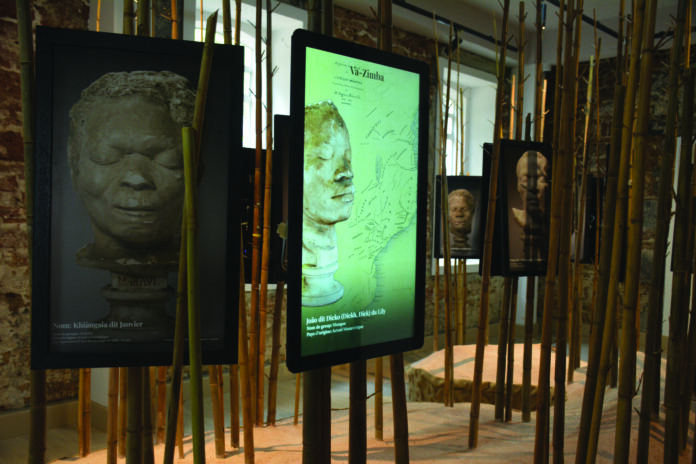The faces of former captives living in Mauritius in 1846 are lined up on a monumental poster, as if they were living here… 34 photos and 12 animations video recount the story of their capture and deportationn are the highlight of the prefiguration exhibition of the future Musée intercontinental de l’esclavage, in Port-Louis.
Dominique Bellier
When it was inaugurated on September1, the exhibition could be considered a “work in progress”, in which several elements of the scenography were to be revised and improved later on. Let’s go straight to the last room of this small exhibition, where elements of ethnographer Eugène de Froberville’s work on former captives deported to Mauritius from present-day Mozambique, Tanzania, Malawi and Comoros are presented.
After five years of study, research, diplomacy and exchanges, Klara Boyer-Rossol, a historian specializing in the Makua people, has succeeded in setting in motion the process of restitution of this human treasure, in the country where these people – many enslaved, others considered liberated – spent the last (and sometimes major) part of their lives, and some even founded families and had descendants…
We’re just at the beginning of this process, since for the moment only photos of 34 plaster busts, kept at the Château de Blois museum, are shown here. Discovering these real faces of former captives brought to Mauritius, with their singular expressions – a twitch, a sneer, a squint – triggers a dazzling emotional charge, as if these last ancestors from East Africa were suddenly incarnated before our very eyes.
Eugène de Froberville
During a stay in Mauritius in 1846, Eugène de Froberville molded the faces or entire heads of 58 men in clay to create these plaster busts. For each encounter, the ethnographer asked his “informant” about his origins, his life in his native country, and the conditions of his capture and expedition to Mauritius. Sometimes, the stories were expanded to include certain warrior, ritual, artistic or musical practices, as the ethnographer was interested in languages, music and all aspects of the culture of these East African peoples.
Whether they’re called Zéphirin, Jasmin or Prosper, they all have a birth name and the name they were given in Mauritius. Animated videos tell the story of twelve of them. Mahimbou, for example, was captured around 1815 in the Zanzibar region, then deported to Mauritius the following year, where he was probably enslaved under the name Pollux for almost twenty years. Joao, renamed Dieko du Lily, was taken aboard a Brazilian ship as a slave in 1840, then “freed” by the English cruiser, the Lily, which took him to Mauritius, where slavery had been abolished five years earlier.





